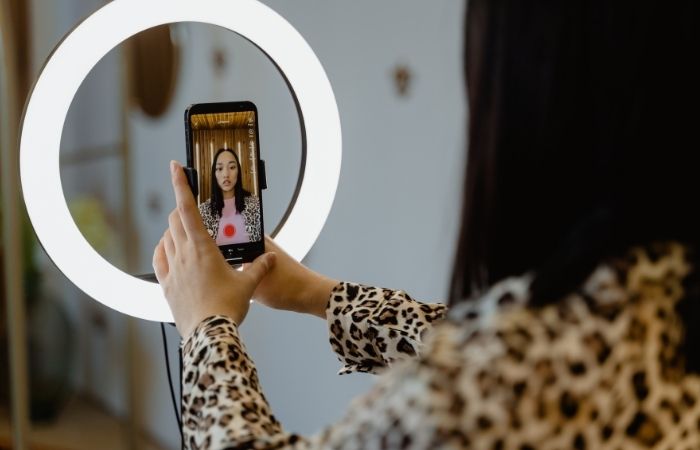The Numbers Don’t Lie Why Non-Sex Workers Often Have Higher Undiagnosed STD Rates
Quick Answer: Yes, you can get STDs from oral sex, skin-to-skin contact, or even a single hookup. Social media often downplays these risks, but the data doesn’t lie.
That Viral “Advice” Might Be Why You’re Burning Right Now
If you're here because your throat feels weird after giving head, or you noticed a painful bump and your last hookup swore they were “clean,” you’re not paranoid. You're informed, and possibly misled by algorithms designed for entertainment, not healthcare.
One of the most dangerous TikTok trends we’ve seen lately is “pull-out culture.” These videos, often made with zero clinical backing, casually suggest that if there’s no ejaculation, there’s no risk. Others claim STDs are only a concern if you “go all the way,” leaving a generation of users genuinely shocked when a positive result pops up after a “safe” hookup that involved nothing but oral sex and some casual grinding.
In reality? According to the CDC, oral sex can transmit gonorrhea, chlamydia, syphilis, herpes, and even HIV in certain conditions. Skin-to-skin STDs like herpes and HPV don’t care if there was penetration. They only care if there was contact.
The worst part? These myths aren’t just wrong, they’re seductive. They let people feel invincible, exempt, or “too smart to catch something.” Until they do.

People are also reading: You Can Now Test for Herpes in Your Bedroom! (Here’s How It Works)
“He Swore He Was Clean. I Believed Him.”
Ashley, 21, had been following sex ed creators on TikTok for months. She felt empowered. Informed. Ready. Her situationship was open about having a few partners recently, but he said he always pulled out, and “everyone he hooked up with was super clean.” She thought she was being cautious. They never had intercourse, just oral and toy play.
Three weeks later, she noticed a dull ache during urination and a weird smell she couldn’t explain. It wasn’t fishy. Just... wrong. She brushed it off until it got worse. The at-home test said chlamydia. She messaged him. He was shocked too. Turned out, he’d never been tested, he just assumed his partners were “low risk.”
According to a 2022 meta-analysis, 78% of young adults who tested positive for chlamydia reported “low-risk” or “non-penetrative” encounters. STD myths aren't just innocent misunderstandings, they’re vehicles for unchecked transmission.
Social Media STD Myths vs. Medical Reality
Below is a breakdown of some of the most viral (and dangerous) beliefs circulating online, and what the science actually says.
Table 1. Popular myths circulating online vs. what medical evidence shows. Believing the wrong one could delay diagnosis, or cause you to unknowingly spread infection.
How TikTok and Reddit Are Shaping Sexual Decisions
It’s 2AM. You’ve got a weird bump or a sore throat after a hookup. Instead of calling a clinic, you open Reddit. Within seconds, you’re in a thread titled “Help! Could this be herpes or just irritation?” There’s a blurry photo, three wildly different responses, and someone confidently saying, “You’re fine, bro. Looks like razor burn.”
It’s not just that people go to Reddit or TikTok first, it’s that they believe what they find. These platforms weren’t designed to educate. They were built to entertain, validate, and reward hot takes. That’s a terrible combo when your health is on the line.
According to a 2021 study on sexual health misinformation online, posts with “strong emotional tone” and “personal storytelling” were more likely to be shared, even when they were inaccurate. The most viral STD TikToks? They usually fall into two categories: jokes or trauma-dumps. What’s missing is clarity, science, and prevention that doesn’t sound preachy.
It’s easy to fall for confident strangers online. They look fine. They speak like friends. But when the info is wrong, the consequences are real. STDs don’t care if you were trying your best with the info you had. They show up anyway, and often silently.
What If You Have No Symptoms? Here’s Why That Doesn’t Matter
Here’s one of the most destructive myths out there: if you have an STD, you’ll know. You’ll feel it. You’ll see something weird, or painful, or obvious. That’s what Reddit says. That’s what your ex said. That’s what your roommate’s TikTok therapist said.
It’s wrong.
Most common STDs show zero symptoms in their early stages, and some never show them at all. Chlamydia? Silent in over 70% of women and 50% of men. HPV? Often clears before you know it’s there, but can leave cervical damage in its wake. Herpes? It might be in your body for months before the first sore appears, if it ever does.
That’s what makes the myth so dangerous. People wait to “feel off.” By the time they do, they’ve had multiple partners, or passed it unknowingly to someone else.
And let’s not forget: some of the symptoms, when they show up, are easy to misread. A little discharge? Probably just friction. A sore throat? Must be allergies. A rash or itch? You changed your detergent. Social media reinforces this confusion with hot takes and amateur photo guessing. “It doesn’t look like an STD” becomes a reason not to test. But real stories, and real data, say otherwise.
The Reddit Thread That Delayed a Diagnosis
Kyle, 23, posted on r/STD in early spring. His post was short: “Small painless bump near shaft. No discharge. Could be herpes?” The top-voted reply told him not to worry. “It’s just a Fordyce spot,” someone commented. “Totally normal. I have them too.” Kyle relaxed. He didn’t test. A month later, the bump spread, ulcerated, and began to burn. A clinician took one look and diagnosed HSV-2.
“I felt so stupid,” he said. “I believed a stranger who had no reason to know anything about my body.” He wasn’t alone. That thread had over 400 upvotes and dozens of replies, all amateur, none from providers.
Reddit’s STD forums and TikTok’s “I’m not a doctor but…” crowd can feel more accessible than an actual clinic. But they’re rarely accurate, and never liable. Your body deserves better than crowd-sourced guessing.
STD Symptoms People Ignore, And What They Could Really Mean
If you’ve ever brushed off something because it didn’t seem “bad enough” to be an STD, you’re not alone. Here's how often-missed signs are dismissed, and what they can actually signal.
Table 2. These micro-symptoms are easy to miss, easy to downplay, and often ignored because of myths circulating online. Testing is the only way to know for sure.
When to Test, and Why TikTok Is Dead Wrong About Timing
One of the most dangerous STD myths on TikTok is this: “If you don’t have symptoms in a few days, you’re fine.” But STDs don’t work like hangovers or food poisoning. They don’t always show up fast. And when they do? It’s often long after the window where treatment would’ve been easiest.
Here’s the real deal: each STD has its own incubation and detection window. That’s the time between exposure and when a test can actually pick it up. Testing too early can give you a false negative, and that’s exactly how infections keep spreading silently.
Let’s clear up the misinformation with data, not drama.
Table 3. Timing matters more than TikTok lets on. Early tests might miss active infections, especially if they rely on antibodies.
Bottom line? If you’ve had an exposure and you’re concerned, even if it was “just oral” or “only once”, testing at the right time matters more than waiting for symptoms. Those might never come.
And if you’ve waited weeks or months and feel fine, don’t assume you’re in the clear. Asymptomatic doesn’t mean uninfected. It means you’re playing roulette with people’s health, including your own.
Why You Can’t Tell If Someone’s “Clean” by Looking
One of the worst myths alive on TikTok and Reddit is that you can tell someone’s status by vibe, hygiene, or how “normal” their body looks. There are endless videos where people proudly say they’ve never used a condom because “they looked trustworthy” or “they’re super into health.”
This is nonsense, dangerous nonsense.
STDs don’t make you look dirty. Most of the time, they don’t make you look like anything at all. In fact, many people spreading herpes, chlamydia, and gonorrhea don’t even know they have it. They’re not lying. They’re just uninformed, thanks to the same social media spiral you’re trying to navigate right now.
Let’s be real: some of the most fit, plant-based, meditation-loving, sexually responsible people test positive. Some people with multiple partners never do. You can’t guess health. You have to test.
That includes you. Because if you're relying on visual cues, “clean” vibes, or what someone told you on a TikTok comment thread? You’re gambling.

People are also reading: You Have Herpes, But Which Kind? The HSV-1 vs HSV-2 Reality Check
At-Home Testing: Take Control Without the Clinic
If you’ve been scared to test because of shame, clinic anxiety, or just not knowing where to start, welcome to your new favorite secret weapon. At-home test kits can detect multiple common infections without stepping foot in a waiting room or explaining your sex life to a stranger.
You collect your own sample, interpret results in minutes, and choose what to do next, with zero judgment. Whether you’re testing after a one-night stand, a situationship, or a “nothing really happened” moment that now feels suspicious, these kits make the process accessible, fast, and trauma-free.
Need to test for just one thing? Options like the Chlamydia Test Kit or Herpes 1 & 2 Kit are affordable and specific.
And the best part? You don’t need permission from TikTok, Reddit, or anyone else to take care of yourself.
FAQs
1. Wait, so I can get an STD from oral?
Yup. Oral sex might feel lower risk, but it’s not zero risk. Gonorrhea loves the throat. Herpes? Can absolutely pass from a cold sore to someone’s genitals during one “quick taste.” If there are mucous membranes (mouths, genitals, throats), there’s a chance. Most people who get it from oral had no idea it was even possible.
2. It was just one time. That can’t be enough, right?
Sadly, once is all it takes. One moment, one partner, one slip. It doesn’t mean you were reckless. It just means biology didn’t need a second round. The idea that it takes “a lot” of exposure to get infected? Total myth. Ask anyone who's tested positive after their first-ever hookup.
3. They said they were clean. Why would they lie?
They might not be lying. They might just not know. A lot of STDs don’t show symptoms. People assume they’re fine because they “feel normal.” Unless they tested recently and saw those results on paper (or a screen), it’s just wishful thinking dressed up as honesty.
4. I don’t have any symptoms, am I overreacting?
Not at all. Most STDs are silent, especially in the early stages. Chlamydia, for example, can hang out for months without making a peep. Herpes can live in someone for years before the first sore ever shows. If you’re feeling nervous after exposure, you’re just paying attention. That’s smart, not paranoid.
5. Can I use a rapid test if I only had oral?
Yes, but make sure it’s the right kind. Some STDs hang out in the throat but not in urine, so you may need a swab for a full check. Still, a rapid test for chlamydia or gonorrhea is a great start, especially if you don’t want to sit in a waiting room Googling symptoms under your coat.
6. What if I test positive? Does that make me gross?
No. It makes you... human. Infections happen. What matters is what you do next. Treat it. Rest. Inform partners if needed. And remind yourself that your worth isn’t tied to a diagnosis. Shame is optional, but getting better isn’t.
7. Can I still have sex after this?
Absolutely. Once treated (or if it’s something like herpes, once you understand your transmission window), you can still have amazing, respectful, hot sex. You’ll just be a little more informed, and maybe a little more cautious. That’s growth, not punishment.
8. Do I have to tell my situationship?
Technically yes, ethically definitely. You don’t have to give them your full medical chart, but letting them know protects everyone they’re with after you, too. Keep it simple: “Hey, I tested positive for something and you might want to get checked out.” You don’t owe them your shame, you owe them the truth.
9. I’m scared to test. What if it’s positive?
That fear is real. But not testing doesn’t make the risk go away, it just leaves it in charge. Most STDs are easily treatable if caught early. Some never cause serious problems if managed well. Knowing gives you power. And you deserve to be in the driver’s seat of your own body.
10. Where can I test without anyone knowing?
Right here. You can order a Combo Home STD Test Kit that shows up in boring packaging, takes minutes to use, and doesn’t involve clinics or insurance. Just you, your results, and your next move, on your terms.
This Isn’t the End, It’s the Reset
Maybe you followed a Reddit thread that told you not to worry. Maybe a TikTok convinced you it wasn’t “real sex,” so you thought testing was for other people. Maybe you just trusted someone who said they were clean. That doesn’t make you naive, it makes you human.
Now you know better. That’s the part that matters.
Don’t wait for symptoms that might never come. Don’t bet your body on a stranger’s comment section. Take the step that so many people wish they’d taken sooner: test from home, quietly, quickly, and on your own terms.
Your sex life doesn’t end with a diagnosis. But your anxiety might end with an answer.
How We Sourced This Article: We combined data from public health authorities, academic research, and real-world case studies to bring you a clear, compassionate look at the disconnect between social media and sexual health. Around fifteen reputable sources informed the article; below, we’ve highlighted some of the most relevant and reader-friendly ones.
Sources
3. Chlamydial Infections – Treatment Guidelines | CDC
4. Chlamydia Trachomatis Infection: Symptoms & Causes | Mayo Clinic
5. Chlamydia | Cleveland Clinic
About the Author
Dr. F. David, MD is a board-certified infectious disease specialist who works to stop, diagnose, and treat STIs. He is dedicated to making his work available to more people, whether they live in cities or off the grid. He combines clinical accuracy with a straightforward, sex-positive approach.
Reviewed by: Leila Martinez, MPH | Last medically reviewed: October 2025
This article is for informational purposes and does not replace medical advice.






